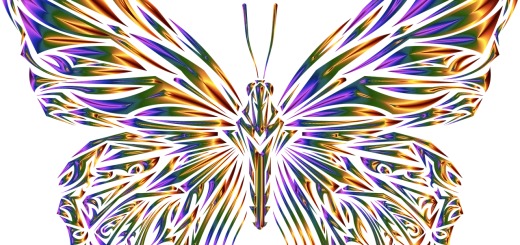Qi Energy in Taoist Yoga: Balancing Life Force

Looking for more amazing products? Check out our online store and explore our collection here! Happy shopping!
Before diving in, please note: This post is for informational purposes only. If you’d like to know more about how we approach topics, feel free to check out our friendly Disclaimer Page.
Hey there, amazing readers! 
We’re committed to delivering quality posts, and your support (even just sticking around despite the ads) means everything to us. So, bear with us, and thanks for helping us keep the good vibes rolling. Now, on to the fun stuff!
TRANSLATE BUTTON AT THE END OF THE ARTICLE
A Quick Overview
In Taoist philosophy, the concept of Qi energy is central to understanding the balance of life force within the body.
Qi, often described as vital energy or life force, flows through the body in specific pathways, influencing physical, mental, and emotional well-being.
Taoist yoga is a practice that focuses on cultivating and balancing this Qi energy to promote health, longevity, and spiritual growth.
By harmonizing the flow of Qi, practitioners can enhance their overall vitality and achieve a state of balance and harmony within themselves.
Understanding Qi Energy in Taoist Yoga
Qi energy is believed to be the fundamental force that sustains life and animates the body in Taoist philosophy.
It is seen as the essence of all living things, connecting the individual to the universe.
In Taoist yoga, practitioners work to cultivate and balance their Qi energy through various techniques such as breathwork, movement, meditation, and visualization.
By harmonizing the flow of Qi in the body, individuals can enhance their health, vitality, and spiritual well-being.
The Concept of Life Force in Taoism
In Taoism, life force or Qi is seen as the vital energy that sustains all living beings.
It is believed to flow through the body in specific pathways known as meridians, influencing various aspects of physical, mental, and emotional health.
According to Taoist philosophy, when Qi energy is balanced and harmonious, individuals experience optimal health and vitality.
However, imbalances or blockages in the flow of Qi can lead to illness, fatigue, and emotional disturbances.
Importance of Balancing Qi Energy
Balancing Qi energy is essential for maintaining overall health and well-being in Taoist yoga.
When Qi flows smoothly and harmoniously throughout the body, individuals experience increased vitality, mental clarity, and emotional stability.
By cultivating a balanced state of Qi, practitioners can enhance their resilience to stress, boost their immune system, and improve their overall quality of life.
Balancing Qi energy is seen as a key component of Taoist yoga practice for promoting longevity and spiritual growth.
Techniques for Cultivating Qi in Taoist Yoga
Taoist yoga offers a variety of techniques for cultivating and balancing Qi energy in the body.
Some of the common practices include:
Qigong exercises: gentle movements and postures designed to promote the flow of Qi energy.
Acupressure: applying pressure to specific points on the body to stimulate the flow of Qi.
Tai Chi: a series of slow, flowing movements that help to harmonize the body’s energy.
Herbal medicine: using herbs and supplements to support the balance of Qi energy in the body.
By incorporating these techniques into their daily practice, individuals can enhance their vitality, strengthen their immune system, and promote overall well-being.
Breathwork and Qi Energy Flow
Breathwork is a fundamental aspect of Taoist yoga practice for cultivating and balancing Qi energy.
By focusing on deep, slow breathing techniques, practitioners can enhance the flow of Qi throughout the body.
Conscious breathing helps to oxygenate the blood, calm the mind, and regulate the body’s energy systems.
By practicing mindful breathing exercises, individuals can increase their awareness of Qi energy and promote a state of balance and harmony within themselves.
Yoga Poses for Balancing Life Force
Yoga poses, or asanas, are another powerful tool for balancing Qi energy in Taoist yoga practice.
Certain postures are specifically designed to stimulate the flow of Qi energy through the body’s meridians.
By practicing yoga poses that target specific areas of the body, individuals can release tension, improve circulation, and enhance the flow of Qi.
Some beneficial poses for balancing life force include:
Tree pose: promotes grounding and stability, connecting the practitioner to the earth’s energy.
Warrior pose: cultivates strength and resilience, fostering a sense of empowerment and vitality.
Downward-facing dog: encourages circulation and relaxation, helping to release tension and promote energy flow.
By incorporating these yoga poses into their practice, individuals can enhance their overall health and well-being.
Meditative Practices for Harmonizing Qi
Meditation is a key component of Taoist yoga practice for harmonizing Qi energy.
By cultivating a state of mindfulness and inner awareness, individuals can connect with their Qi energy and promote balance and harmony within themselves.
Meditative practices such as visualization, mantra chanting, and mindfulness meditation help to calm the mind, reduce stress, and enhance the flow of Qi throughout the body.
By incorporating regular meditation into their daily routine, practitioners can deepen their connection to their life force and promote a sense of calm and well-being.
Benefits of Balanced Qi Energy
Balancing Qi energy offers a wide range of benefits for practitioners of Taoist yoga.
Some of the key benefits include:
Increased vitality and energy levels.
Enhanced mental clarity and focus.
Improved emotional well-being and resilience to stress.
Boosted immune system function.
Greater sense of harmony and balance within oneself.
By cultivating and balancing their Qi energy, individuals can experience a profound sense of well-being and vitality in all aspects of their lives.
Signs of Imbalanced Qi in the Body
Imbalanced Qi energy can manifest in various ways within the body, indicating blockages or disruptions in the flow of life force.
Some common signs of imbalanced Qi include:
Fatigue and lack of energy.
Chronic pain or tension in specific areas of the body.
Digestive issues or hormonal imbalances.
Emotional disturbances such as anxiety or depression.
Weakened immune system and frequent illness.
By recognizing these signs of imbalanced Qi, individuals can take steps to restore harmony and balance within their energy systems through Taoist yoga practices.
Healing Practices for Restoring Qi Balance
Taoist yoga offers a variety of healing practices for restoring balance to Qi energy within the body.
Some of the common techniques for healing imbalanced Qi include:
Acupuncture: inserting needles into specific points on the body to stimulate the flow of Qi.
Herbal medicine: using traditional herbs and supplements to support the body’s energy systems.
Massage therapy: applying pressure to the body’s meridians to release tension and promote energy flow.
Energy healing: practices such as Reiki or Qi Gong to channel and balance Qi energy within the body.
By incorporating these healing practices into their routine, individuals can restore balance and harmony to their Qi energy, promoting overall health and well-being.
Incorporating Taoist Yoga into Daily Life
Integrating Taoist yoga practices into daily life can help individuals maintain balance and harmony within their Qi energy.
Some ways to incorporate Taoist yoga into daily routines include:
Setting aside time for regular practice of Qigong exercises or Tai Chi movements.
Practicing breathwork and meditation techniques to cultivate awareness of Qi energy.
Incorporating healthy habits such as eating a balanced diet, getting enough rest, and staying hydrated.
Seeking guidance from a qualified instructor or practitioner to deepen one’s understanding of Taoist yoga principles.
By making Taoist yoga a part of their daily routine, individuals can enhance their vitality, promote longevity, and experience a greater sense of well-being.
Finding Balance and Harmony with Qi Energy
By cultivating and balancing Qi energy through Taoist yoga practices, individuals can achieve a state of balance and harmony within themselves.
Through breathwork, movement, meditation, and healing practices, practitioners can enhance their vitality, resilience, and overall well-being.
By recognizing the signs of imbalanced Qi and taking steps to restore harmony within their energy systems, individuals can experience a profound sense of health, happiness, and spiritual growth.
Ultimately, Taoist yoga offers a path to connect with the universal life force and cultivate a deep sense of balance and harmony within the body, mind, and spirit.
Conclusion
In conclusion, Qi energy in Taoist yoga plays a vital role in promoting health, vitality, and spiritual growth.
By understanding the concept of life force in Taoism, practitioners can work to balance and harmonize their Qi energy through various techniques such as breathwork, movement, meditation, and healing practices.
By incorporating Taoist yoga into daily life, individuals can maintain balance and harmony within their Qi energy, leading to increased vitality, resilience, and overall well-being.
By finding balance and harmony with Qi energy, practitioners can experience a profound sense of health, happiness, and spiritual connection with the universal life force.

The Enlightenment Journey is a remarkable collection of writings authored by a distinguished group of experts in the fields of spirituality, new age, and esoteric knowledge.
This anthology features a diverse assembly of well-experienced authors who bring their profound insights and credible perspectives to the forefront.
Each contributor possesses a wealth of knowledge and wisdom, making them authorities in their respective domains.
Together, they offer readers a transformative journey into the realms of spiritual growth, self-discovery, and esoteric enlightenment.
The Enlightenment Journey is a testament to the collective expertise of these luminaries, providing readers with a rich tapestry of ideas and information to illuminate their spiritual path.
Our Diverse Expertise
While our primary focus is on spirituality and esotericism, we are equally passionate about exploring a wide range of other topics and niches 

To ensure we provide the most accurate and valuable insights, we collaborate with trusted experts in their respective domains 
Our blog originally focused on spirituality and metaphysics, but we’ve since expanded to cover a wide range of niches. Don’t worry—we continue to publish a lot of articles on spirituality! Frequently visit our blog to explore our diverse content and stay tuned for more insightful reads.
Hey there, amazing reader! 
Check out our store here and take a peek at some of our featured products below! Thanks for being awesome!











